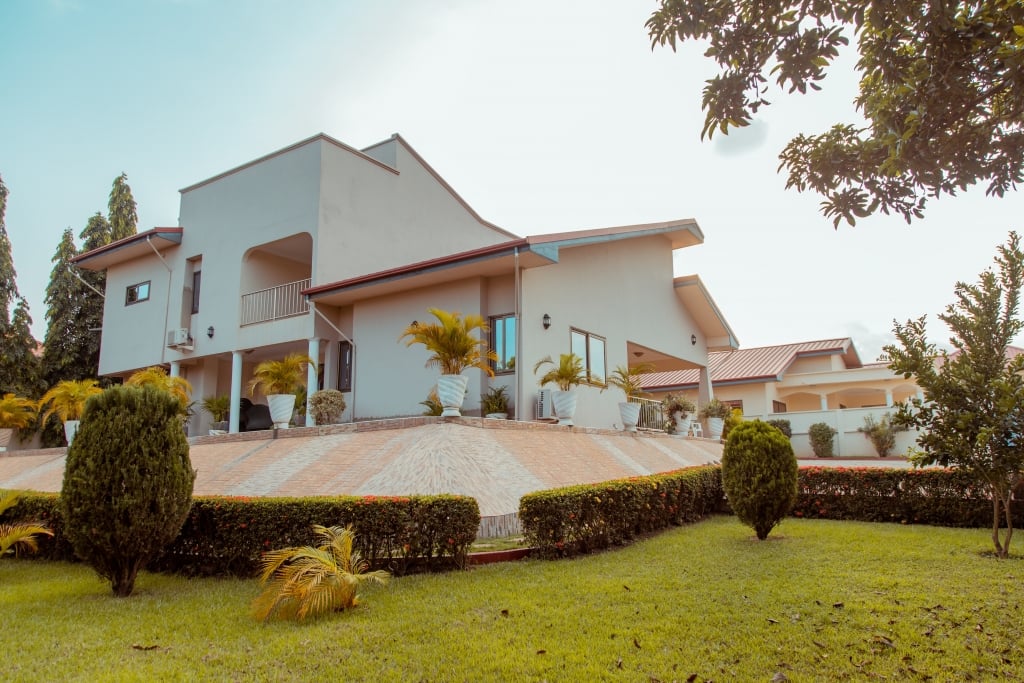Competition is the name of the game when it comes to the real estate industry.
There are around 1.52 million real estate agents in the US, according to the National Association of Realtors. So a proficient and dazzling real estate listing presentation is one of the strongest tools in your arsenal to be ahead of the pack..
If you only have about 1 hour to persuade your prospective clients, even the most minute detail can make or break the listing appointment.
And a real estate listing presentation could be that detail.
Whether you are fresh off the bench or you want to sharpen your game for your next listing appointment, we’ve prepared a complete guide to help you rock your real estate listing presentation. It’s no walk in the park.
But these strategies and real estate listing presentation templates offer a blueprint for success.
What Is a Real Estate Listing Presentation?

The listing presentation is, at its essence, a sales pitch. A way to convert leads into prospective clients.
It’s also your chance to shine as a real estate agent. To win the listing presentation, you must harness your finest skills. There are a few aspects that must come through in order to close the deal:
- Your people skills. Real estate agents have to be likable and create a favorable, lasting impression on their potential buyers or sellers.
- Your research skills. High-quality research affects everything, from the quality of your presentation to your ability to attract sellers and buyers.
- Your ability to sell. It goes without saying why using your salesman skills is vital tot the success of your pitch.
- Your authentic self. Leaving your mark on the selling process will make you stand out.
- Your agility. Listing appointments and house tours are filled with unexpected events. Flexibility allows you to deal with the unexpected in fruitful ways.
The real estate listing presentation should mirror who you are as a professional. More so, it should reflect the success of your real estate business, and show clients and prospects how you can add value to the selling process.
What to Include in a Real Estate Listing Presentation?

Photo by Avi Waxman on Unsplash
Remember, real estate listing presentations are short. They shoot straight to the point.
On average, they last about 30 to 60 minutes. But each presentation is unique. Concerned or first-time sellers might have plenty of questions, as opposed to more experienced sellers. That’s something to keep in mind as you prep for the presentation.
Now, let’s break down the main ingredients that make up a memorable real estate listing presentation.
1. The Introductory Section
Every real estate listing presentation should contain a brief introduction. This section is a chance to introduce yourself and your brokerage in terms of professional background, qualifications, and reputation. Last but not least, it should direct the focus on the needs and expectations of your potential clients.
Let’s zoom in on the elements that make up this section.
The Brief Resume
Every home seller wants to hire a qualified real estate agent who will get them a fair and good price.
But trust is built, not born.
This introductory section will help them gauge your ability to make the sale happen. Here is what you should include:
Your top skills. Maybe you have a keen eye for design. Or you’re marketing savvy. Maybe you’re the life of the party. Lead with your top skills. It would be ideal, though, if they matched the seller’s needs. Your unique value proposition should come through in this part of the pitch.
Listings you’ve previously sold in the area. This conveys that you are familiar with the neighborhood and that you can predict the market value of the property. There’s no point mentioning apartments if the seller owns an ocean-view house with a spacious patio. Include similar previously sold listings only.
A comparison of the original sales price against the final sales price. Most clients would pay a higher commission fee, provided the agent can secure them a better price for the property.
Social proof. As humans, we are heavily influenced by the opinion of others in our decision-making process. In the real estate industry, social proof is a very powerful technique that you can use to attract clients. Tossing in testimonials and photos of previous clients guarantees a batch of approval.
Alternatively, you can include your achievements, such as:
- Total number of properties sold
- Customer satisfaction rate
- Average time to make a sell
- Total number of clients
- Professional organizations you are a member of
Don’t be shy. Customers need to know that you are the most suitable agent for the job.
If this is one of your first real estate listing presentations, there is an ace up your sleeve that you can use to grow your social capital: the brokerage. You can bring an experienced member of your company, so clients can see that you are being coached by trained and experienced professionals.
The Brokerage Company
This bit should be succinct. Highlight your company’s unique selling points. What does your company bring to the table?
Explain how you will work on delivering those benefits to clients, and set expectations regarding the communication process. It’s also a good opportunity to include any discounts, packages, or promos that your agency currently runs.
2. The Local Market Data
Now is the moment to present the comparative market analysis or the CMA. It’s a handy way to set expectations about what the price will be. This part of the real estate listing presentation will also demonstrate that you’ve done your due diligence in researching the area and neighborhood.
Of course, the first comparative market analysis is not set in stone. Usually, agents perform two analyses. The first one is based on the data you have at hand and your educated guesses. The second CMA incorporates the data you have gathered after the house tour and discussion with the owners.
By now, clients should know your expectations regarding their property.
Keep it short and sweet. Use charts and graphs to illustrate the results of your analysis. Engaging visuals make the presentation memorable. Xara Cloud provides a wide selection of graphics and charts that you can use in your presentation.
3. The Sales Process in a Nutshell
Some sellers are not familiar with the selling process, especially first-time sellers.
Educating these inexperienced clients is crucial if you want your selling process to run as smoothly as possible. Everyone has expectations and preconceptions. This part will ensure that you and your clients are on the same page.
You should only focus on the general timeline and state what is expected of your clients. Lastly, encourage them to ask questions if they find something confusing.
4. The Sales and Marketing Strategies

Photo by Campaign Creators on Unsplash
You want to show customers how you managed to close amazing deals. This is where the real estate marketing plan comes into play.
Are you considering opting for a cross-channel marketing strategy? Or will you choose full digital? Ideally, your approach will be unique, depending on the property and seller’s needs. Explain to your potential client why you chose this approach over other methods. Show them data that supports your arguments.
They might have a different picture in mind regarding the real estate marketing strategy. You can even include some of their ideas, provided you find them suitable.
5. The Pricing Strategy
While you may not be able to give sellers a sales price just yet, you should nevertheless guide them through your real estate pricing strategy. For good measure, you should explain the roles of the local market data and comparative market analysis in the pricing strategy.
The goal is to educate them on how pricing works and illustrate your approach to getting the best price. To this end, you can highlight how certain elements, such as the number of bedrooms or current market trends, affect the sales price.
This can be a tricky subject, as some homeowners ask for a higher price than the actual value.
6. The Home Preparation

Photo by Roberto Nickson on Unsplash
After you cover topics such as the CMA, marketing plans, and the pricing strategy, you should educate your clients, so they know how to prepare the property for sale.
It’s essential that they understand their responsibilities in this domain and how certain unwanted features can affect the selling price. Here are a few aspects you should inquire about:
- Decluttering
- Cleaning
- Reparations
- Removing personal items
- Renovations
Additionally, you can discuss home staging in this section of the real estate listing presentation.
82% of agents said that home staging helps buyers visualize and personalize the space. It’s great for helping future owners imagine what it would feel like to wake up in that home.
Therefore, it’s important that sellers understand the potential of this strategy, and what it entails. Home staging, along with quality photos, videos, or virtual tours, speeds up the selling process and brings better offers.
This leads us to the open house events. Should you choose to opt for these, this is the ideal time to explain to your clients how these work. An open house event, however, might not be so effective, as most homebuyers find their home online nowadays.

Photo by Tobias Nii Kwatei Quartey on Unsplash
Extra Tip: Design the Real Estate Listing Presentation with Brand Consistency in Mind
Sure, what you include in the real estate presentation is crucial. So is how you pitch. Yet we cannot neglect the importance of a neat presentation layout filled with stunning visuals and graphs. The best learning experience happens when information is presented through multiple channels.
So visual communication also matters. A lot. Luckily, you don’t have to spend hours creating listing presentation templates from scratch.
Use ours. To make the entire process easier, our team has compiled a few real estate listing presentation examples and templates that you can use. Creating your own listing presentation has never been easier.

Source: Xara

Source: Xara
Whether you’re aiming for a minimalist, modern look or a design leaning toward the traditional side, there’s a real estate listing presentation template for every need. Not to mention that each real estate listing presentation template can be edited and personalized based on the information you want to include.
This way, your real estate listing presentation will match your brand vision.
How to Prepare Before You Go to a Real Estate Listing Appointment?
Going empty-handed to a listing appointment is not in your best interest.
You have to prepare beforehand and put together a strategy. Otherwise, you’ll end up like Phil from Modern family, trying to sell a house you don’t actually understand. If you haven’t seen the episode, we’ll summarize it for you: Phil is trying to present a house, but can’t figure out the complicated and impractical layer of it. You can imagine the outcome, right?
There are two possible root causes to this. Either the client wasn’t the right fit for his expertise, so he shouldn’t have taken on the job. Or maybe he should have done more research before hosting an open house. Either way, you don’t want to get caught off guard during your appointment.
Prepare.
Not only will this reflect your trustworthiness as a real estate professional, but it can also help homeowners gain an encompassing understanding of the current market.
It will be easier to collaborate with prospective clients after you’ve done your due diligence to inform them.
There are a couple of aspects you should cover in your pre-listing preparation stage.
#1: Study the Neighborhood
This is the moment to put your Sherlock Holmes skills to good use. Part of a listing agent’s job is acting as a scientist or detective in their work. Research is especially important when you prepare for real estate listing presentations.
Talk to other real estate agents or friends to see what you can find out about the neighborhood in question. Take your car for a ride and explore the area. Act like a local. Attention to details is key at this point.
Here’s what you should look at:
- Median age
- Safety
- Level of diversity
- Transportation
- School districts in the area
- Level of noise
- Number of families
- Distance to amenities, such as the supermarket, gym, or restaurants
- Future developments, such as construction plans in the area
Why is this step so crucial?
Well, researching the neighborhood helps with setting up the sales price, it’s great for attracting potential clients, and it also informs your marketing strategy.
#2: Perform a Comparative Market Analysis or Study the Local Market Data

Photo by Carlos Muza on Unsplash
Before you can sell your pitch and the property, you need to learn everything there is to know about the subject property. Persuasive real estate listing presentations are based on thorough research.
Imagine meeting with a real estate agent who knows nothing about your home. Would you trust them with selling your property? Of course not.
A firm grasp of the local data will persuade the potential client that you are well-equipped for the job. It will show them that you have learned everything there is to know to price the property, market it successfully, and ultimately guide the entire selling process on their behalf.
Not to mention that research helps you feel confident in your choices. Think of it as a compass.
Now, how do you start?
With a comparative market analysis, or CMA. This might sound puzzling at first, but it’s actually easy to grasp. A CMA is used by listing agents to determine the market value of a property. This is done by looking at the local market data: previously sold properties and similar properties currently on the market.
What are the steps for performing a comparative market analysis?
- Collect all the relevant information about the estate. Aspects such as square footage, number of bedrooms or bathrooms, or special features.
- Find out how much was the property listed in the past,
- Look up previously sold homes that are similar or in proximity.
- Search for active listings in the area.
- Compare and put the information together.
Some real estate agents prefer performing a CMA after seeing the client’s home and discussing it with them. If that’s the case, you should still study the local market data and bring forth an analysis based on the square footage, lot size, and neighborhood features.
#3: Practice the Presentation Beforehand
It’s normal to feel nervous about your presentation. But you don’t want to be tongue-tied while you present. You want to be composed and confident in your strategy.
To ease your mind, make sure you practice the pitch out loud before you meet with the home seller.
This way, you will be able to walk in feeling confident and focus on what really matters: fostering a personal connection with the home sellers, presenting all the details, and ultimately converting them into your clients.
#4: Know Thy Competition
The home seller probably contacted other realtors for a consultation. Knowing where you stand compared to other realtors is useful. It helps you see where you might bring the added value to a transaction. Surely, some areas make your approach unique compared to that of other agents.
Of course, bad-mouthing other agents is a big no-no, but knowing what they have to offer may help you discover your unique proposition.
#5: Establish the Structure of the Real Estate Listing Presentation and Appointment
Knowing the process increases its efficiency.
The more you define your listing appointment process, the higher the chances you come off as professional. For instance, you could start by touring the house and save the real estate listing presentation for last.
Choose the agenda that suits your work style. And remember: structure is the key to a smooth-sailing sales process.
#6: Think About Your Unique Value Proposition
What distinguishes you from other real estate agents? This is the moment to let those qualities shine. Think about your:
- Personality
- Reputation
- Years of experience
- Niche
- Personal life. Are there any experiences or hobbies that make you suitable for what the prospective clients are looking for?
Next, make a list and craft a statement that shows why clients will benefit from having you as their listing agent.
#7: Send Them a Pre-listing Package
A real estate pre-listing package is a must if you want to impress potential sellers. It conveys professionalism and care.
Generally, it should include some of your marketing materials, as well as your unique value proposition and advertising strategy. Add details that illustrate your personal brand, such as your real estate logo.
To prompt homeowners to prepare for the meeting, you could toss in some questions about the real estate property and their motivations to sell. This will speed up the listing process.
#8: Establish Your Online Presence
These days, sellers will probably reach out to book an appointment only after they’ve skimmed your social media profiles and website.
A zero online presence makes people obsolete. But so does a lousy online marketing strategy. Effectively leveraging social media is a must.
Your website, your social media profile, your listing presentations should showcase your work and grow the chances of attracting a prospective client. After all, your online presence is your portfolio. It’s a way of showing who you are.
That’s why your real estate marketing plan needs to be up-to-date. There are plenty of real estate marketing ideas that you could pursue. Ultimately, your online presence should mirror your personality and working style, while following the latest marketing trends.
Plus, seller leads can look you up after the appointment. If they see a well-put-together online portfolio, they might be more inclined to sign the listing agreement.
What Should I Bring to a Listing Appointment?
You have put together the listing presentation and prepared it before the meeting. Now, what should you bring with you?
- Duh, the listing presentation.
- The listing paperwork. All the contracts and papers should be at your fingertips in case you close the deal.
- A rough sketch of the points you’re going to cover, if that helps you walk through the meeting with more efficiency.
- Some marketing materials, such as real estate images, flyers, or brochures, so clients can get a feel of your strategy.
- A print of the comparative market analysis, that clients can study at home.
- Testimonials from past clients.
- Your business cards. Xara Cloud offers a wide selection of business card templates that you can choose from.
How to Win a Listing Appointment?

Photo by Scott Graham on Unsplash
It’s the moment of truth. And, as you know, you never get a second chance when it comes to first impressions.
So, let’s see. How to win a listing appointment?
#1. Dress for Success
It takes between 33 and 500 milliseconds to form a first impression about someone. Enthralling, right?
Your dress code could literally set you up for success.
It’s a no-brainer that you should wear something that makes you feel confident, professional, and comfortable. Something that makes you feel that you’ve already converted the seller leads into clients. Ask yourself: “Does my outfit inspire trustworthiness, professionalism, and commitment?”
If the answer’s yes, you’ve got your winner attire.
#2. Mind Your Body Language and Posture

Photo by ThisisEngineering RAEng on Unsplash
Actions are just as important as your words. This is a general rule of thumb when it comes to human relationships.
Especially when you aim to sell.
Your body language can inspire confidence, openness, and professionalism. So keeping this in mind is key to impressing your seller leads. Greeting your prospects with a firm handshake, eye contact, and a smile is a great way to build trust and establish a rapport with them.
#3. Don’t Stop Pitching
During your listing presentation, you might notice micro-expressions of boredom, confusion, or disinterest on the seller’s face. You might think: “Oh, no, I’ve lost them.”
Whatever you do, don’t stop pitching. Keep going, but adapt your tone, stories, and style to what you notice. Come up with an interesting story or pun if you feel like your clients might yawn at any moment. Bring a persuasive and witty argument if they seem to back down.
Adapt your pitch as you go.
#4. Prepare Questions for Your Prospective Clients
Once you have pitched why you are the right person for the job, it’s time to get to know your customers. This is your chance to establish trust, ease their fears, and determine their wants and needs.
Here are a few questions you could ask:
- “What are the reasons for selling?” – helps you gauge whether there is any room for negotiation
- “What do you like about the real estate property or neighborhood?” – this will bring to light some of the unique features of this property
- “Are there any issues I should know about?”
- “How long has this property been on the market?”
#5. Set-Up Time for a Q&A Session
Just as you have inquiries, so do sellers. Make sure you set aside some spare time to answer all of their questions.
You don’t want to look like a rabbit caught in headlights. That’s why you should do your homework ahead. A few objections and questions from home sellers may come up. After all, they want to cover all their bases before signing the paperwork. But remember — each question or objection is an opportunity to showcase your knowledge and expertise on the matter.
Most inquiries will revolve around property value and time to sell.
Some of them will also focus on getting to know you as a listing agent. Sellers want to know how you came up with the listing price or how you plan to attract buyer leads. Work on building rapport: be positive, honest, and professional.
People will often object to the listing price if it’s lower than they had imagined — it is your duty to explain how you got to that number, why it can’t go higher, and what your selling strategies are.
You can expect the following questions:
- “What’s the ideal listing price for this property? How long will it take to sell it?”
- “How did you come up with this listing price?”
- “What are your credentials? What makes you the right fit?”
- “What makes you different from other real estate agents? What do you bring to the table?”
- “Have you sold similar properties in my area?”
- “What would you change about this property?”
- “How do you advertise homes for sale?”
#6. Present a Case Study
A case study adds a storytelling element to your pitch. It adds character where there were only numbers. The sales process becomes personal and easy to grasp.
Plus, it’s the ultimate social proof you bring to the table. If a previous client is willing to participate in a case study, you must have done something right. A killer case study will boost your expertise and credibility points.
#7. Take Photos of the Client’s Home
This is a fantastic way of creating a buzz on social media before the listing actually goes online. Explain to your prospects that, should they choose not to sign the listing contracts, you will not use any of these materials.
Not only is it a way of marketing the property, but it also leaves a good impression on the homeowners. It conveys that you are determined to sell their property.
#8. Be Authentic
Not only is it liberating to let your true colors shine through, but it’s also one of the most effective strategies to attract future clients.
People can usually sense whether someone’s being authentic or just playing pretend. Part of being authentic is getting used to not saying yes to everything just to win the listing appointment.
Stay true to your approach and expertise, and don’t compromise just to attract clients — especially if you cannot uphold your promises.
It’s best to be upfront, even if it’s uncomfortable.
#9. Always Send a Thank-You Email
This is a golden rule. It shows that you’re considerate. Who knows, this tiny detail might even bring you new business.
And even if you don’t win the listing appointment, you’ll be remembered in a positive light.
Winning Listing Presentations Is Not Easy These Days

Photo by krakenimages on Unsplash
Many people pivoted toward real estate careers during and following the pandemic. With more real estate agents than homes for sale, the race can be tight. To succeed, agents have to prepare assiduously. If you’ve read this far, you’re probably on the right path. This article covered everything you need to know to secure your next listing appointment.
After all, realtors need closure.
But before we come to an end, we have one final tip that will ensure that you deliver killer listing presentations every time.
Visually appealing presentations are alluring. They are a must. So leave the design work to us. We have created a variety of listing presentation templates to choose from. Whether you collaborate with investors or home sellers — our templates are sure to turn heads. Try out Xara Cloud for free. Choose a real estate listing presentation template and create one-of-a-kind listing presentations that convert seller leads into clients. x
Sign up today for a free trial
Get Your Free Real Estate Marketing Materials For Your Business!
Join 10 000+ real estate agents powered by Xara Marketing Center.
- Sign up for a free account.
- Get a 14-day premium trial.
- No credit card required.





 No credit card or phone number required.
No credit card or phone number required.